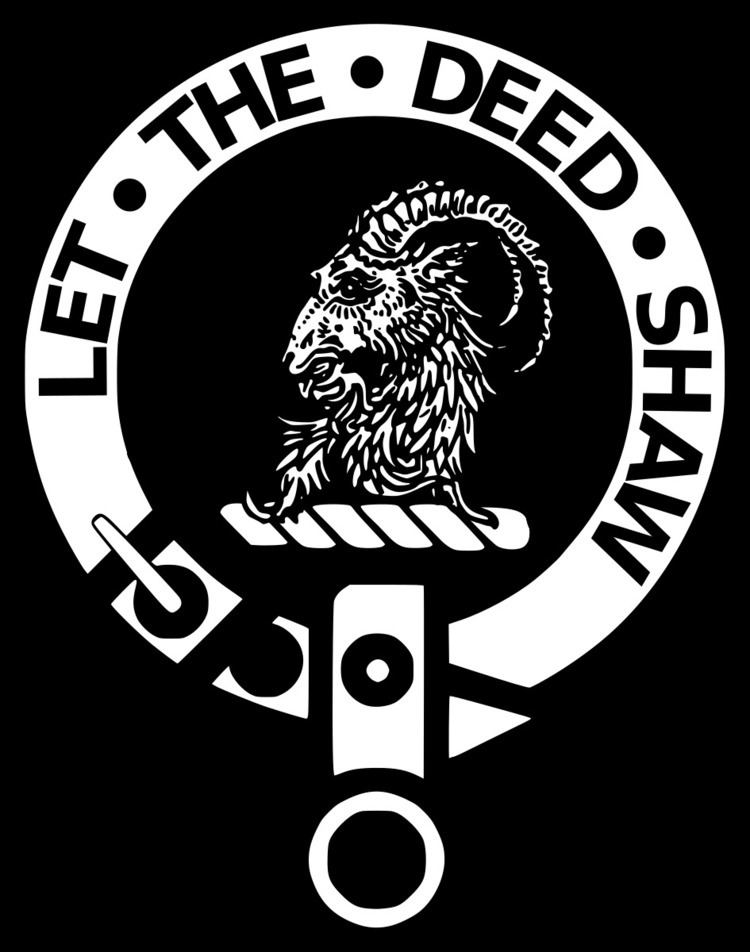Motto Let The Deed Shaw Plant badge None Died 1747 | Region Lanarkshire | |
 | ||
Last Chief Charles Fleming, The 7th Earl of Wigtown | ||
Clan Fleming is a Scottish clan and is officially recognized as such by the Lord Lyon King of Arms. However, as the clan does not currently have a chief that is recognized by the Lord Lyon King of Arms it is therefore considered an armigerous clan.
Contents
Origins of the clan
The surname Fleming is derived from the French, le Fleming, which indicates that the family originated in Flanders. The once powerful medieval principality of Flanders is now split between Belgium, the Netherlands and France. During the latter part of the twelfth century the Flemish were enterprising merchants who traded with England, Scotland and Wales. A distinguished Flemish leader named Baldwin settled with his followers in Biggar, South Lanarkshire under a grant of David I of Scotland. Baldwin became Sheriff of Lanark under Malcolm IV of Scotland and William the Lion and this office appears to have been hereditary for some time.
Wars of Scottish Independence
In 1296 nine Flemings signed the Ragman Rolls swearing fealty to Edward I of England. However, one of the signatories was Sir Robert Fleming who was one of the first people to join Robert the Bruce after the death of the Comyn in 1306.
In 1342 Sir Malcolm Fleming of Cumbernauld was created Earl of Wigtown by David II of Scotland for helping to keep him safe from Edward Balliol and the English. In 1371 Sir Malcolm's grandson, Thomas Fleming, sold the earldom to Archibald Douglas, Lord of Galloway and this was confirmed by Robert II of Scotland.
15th century
Sir Malcolm Flemming of Biggar and Cumbernauld was knighted by Robert III of Scotland. In 1423 he was one of the hostages used for the release of James I of Scotland from the captivity of the English. This Sir Malcolm Fleming was a counsellor and friend of William Douglas, 6th Earl of Douglas and was a member of the party that went to Edinburgh Castle with Douglas, on the invitation Governor Livingstone and Chancellor Crichton in November 1440, where Douglas, his brother David and Fleming were arrested, briefly tried and then beheaded. As a result, his younger son, Sir Robert Fleming, forfeited the lands that had been returned to him by James II of Scotland because his father had died at the faith and peace of His Majesty. Sir Robert Fleming was created a Lord of Parliament before 1460.
16th century
Sir Robert's grandson, John Fleming, 2nd Lord Fleming, was appointed as a guardian to James V of Scotland during the king's infancy in July 1515. In 1517 John became Chancellor of Scotland. However while he was out hawking on 1 November 1524, he was assassinated by John Tweedie of Drummelzier (chief of Clan Tweedie) and others. Malcolm Fleming, 3rd Lord Fleming was Great Chamberlain of Scotland and married Lady Janet Stewart, daughter of James IV of Scotland. This Malcolm Fleming was killed at the Battle of Pinkie Cleugh in 1547.
In 1548 James Fleming, 4th Lord Fleming accompanied the young Mary, Queen of Scots to France where she married the heir to the throne. He was Great Chamberlain of Scotland for life and was one of eight commissioners to the royal wedding in 1558. However he died of suspected poisoning two weeks later in Paris.
17th century
In 1606 John the sixth Lord Fleming was recreated Earl of Wigtown.
18th century and Jacobite risings
The Clan Fleming were Jacobites and the 6th earl attended James II of England and VII of Scotland after the Glorious Revolution of 1688. Fleming opposed the Treaty of Union and voted against every article in the Parliament of 1706. During the Jacobite rising of 1715 he was arrested by the governor of Edinburgh Castle. Charles Fleming had succeeded his brother as the earl but when he died in 1747 the title became dormant.
Modern history
According to the Collins Scottish Clan and Family Encyclopedia, Alexander Fleming who discovered Penicillin is the most distinguished bearer of the name in recent times.
Clan castles
Castles that have been owned by the Clan Fleming include amongst many others:
